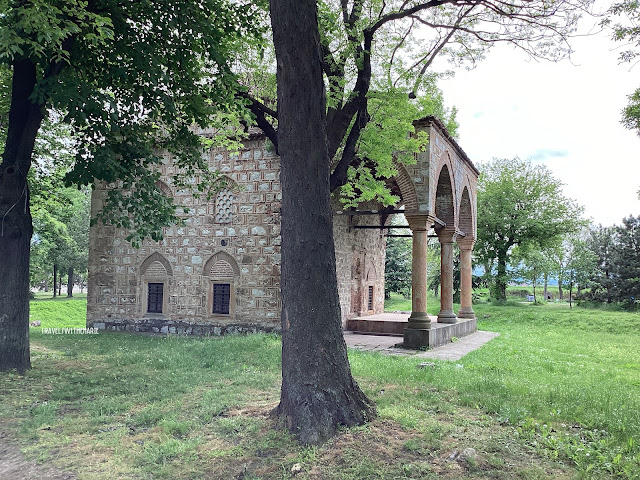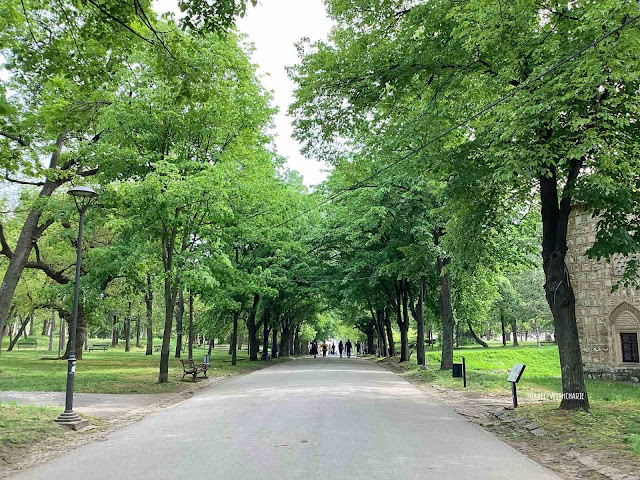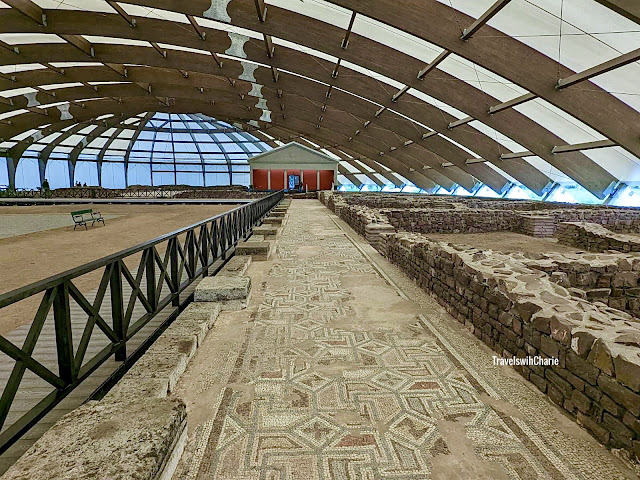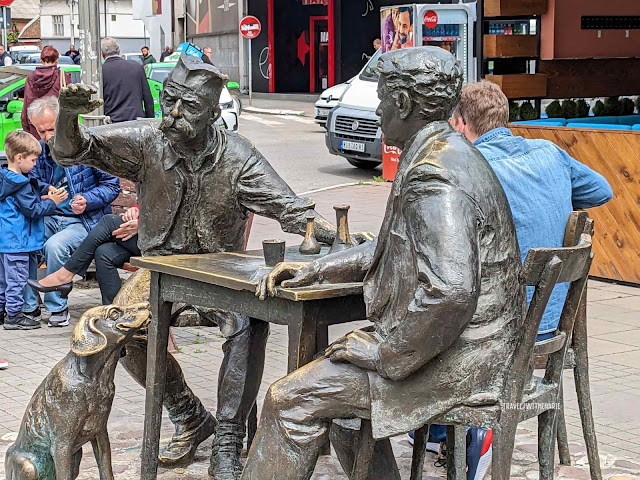Niš (pronounced Neesh) was a thriving Roman city called Naissus in the second century AD. Traces of Roman occupation are evident in these Roman baths found inside Niš Fortress.

The Crveni Krst (Red Cross)* Concentration Camp was built in 1941. As many as 30,000 prisoners were held here - Jews, gypsies and enemies of the Reich. Of that number, some 10,000 or more prisoners were executed between 1941 and 1944 at nearby Bubanj hill. All records at the Camp were destroyed by the Nazis so the exact number of the victims is not known.
Tinker’s Alley (or Coppersmith’s alley) is a hub of restaurants and kefanas (cafés) in the city center, a short walk from the Nišava river.
Monument to Stevan Sremac, a famous Serbian writer and his friend, Kalca, who is featured in his novel, Ivko’s Feast. This is found at the entrance to Tinker’s Alley.


*****
Constantine the Great was born in Niš around 280AD. (Together with Licinius, they signed the Edict of Milan in 313AD which proclaimed religious toleration within the Roman Empire and decriminalized Christianity.) The ruins from his villa in Mediana, about 7 km from the city center, is now open to the public after years of restoration. Floor mosaics of varying geometrical designs run the length of the 40-hectare property. Various artifacts from the archeological excavation are on display in the museum as well as fine floor mosaics that were in the villa of the Emperor. See my article about the Constantine’s Villa here:
The remains of an Early Byzantine street from the 5th-6th century was excavated in 1962. It was one of the main streets within the Fortress.
The Huns ravaged Nis in the 5th century. From the 9th century forward, a succession of occupiers took Nis starting with the Bulgarians. They surrendered the city to Hungary in the 11th century before it was turned over to the Byzantine Emperor in 1175. The reign of the Nemanjić dynasty began at the end of the 12th century until 1375 when the Ottoman Empire seized Niš and ruled the city for the next 500 years.

The Bali Bey Mosque (inside Niš fortress) was previously noted in 1523 as a masjid (a small Turkish shrine without a minaret). In 1710 it was listed as a mosque, the only preserved mosque of 10 that were built by the Ottoman Empire.
The current look of Niš Fortress is from its reconstruction between 1719-1723. It stands on the banks of the Nišava river and was previously the site of the Roman and Byzantine settlements.
Ćele Kula or Skull Tower was built by the Turks using over 900 skulls from the 3000 Serbs killed in the Battle of Cegar in 1809. The Tower is a chilling warning to the people of their fate should they attempt to rise up against the Turks. The Serbian army liberated Niš in 1877.
* The name is taken from the railroad station nearby and has no affiliation with the Red Cross organization.
On February 12, 1942, 147 prisoners tried to escape from the camp. 105 of them made it out safely. The photos displayed above are those of the first prisoners in a Nazi camp in Nazi occupied Europe who managed to escape to freedom. But their escape sparked immediate retaliation. A thousand inmates were executed at the Camp following the escape.
On December 2, 1942, a few more prisoners successfully escaped from the Camp.
Niš today
These three buildings stand out from the modern architectural style of structures found in the city’s commercial district. Art Nouveau architecture.
Art Nouveau architecture

This park inside Niš fortress is lush and beautiful and full of artifacts from Niš’ historic past.

Nišava River has been the lifeline of the city for centuries.
Where to eat:
Ambassador Hotel
I chose to eat here as I didn’t have any local currency and the hotel’s restaurant accepts credit cards. The restaurant is on the mezzanine level with a view of the main square. Their menu includes both Serbian and international dishes. I had only 45 minutes left to eat lunch before joining my tour group so I ordered a chicken consommé (which was very good) and foccacia. The price of my meal and beverage was less than $10.00. Here’s half of the foccacia uno that I was served. Surprise!
How to get to Niš from Sofia, Bulgaria:
There is a small group tour through Get Your Guide from Sofia to Niš. It takes two hours to get to Niš passing through the border patrol stations of both Bulgaria and Serbia and through beautiful mountainous region of southern Serbia along a well-paved highway. There are also buses leaving for Niš from Sofia and one daily non direct train service. Check rome2rio.com for more travel options between Sofia and Nis.
Images by TravelswithCharie













